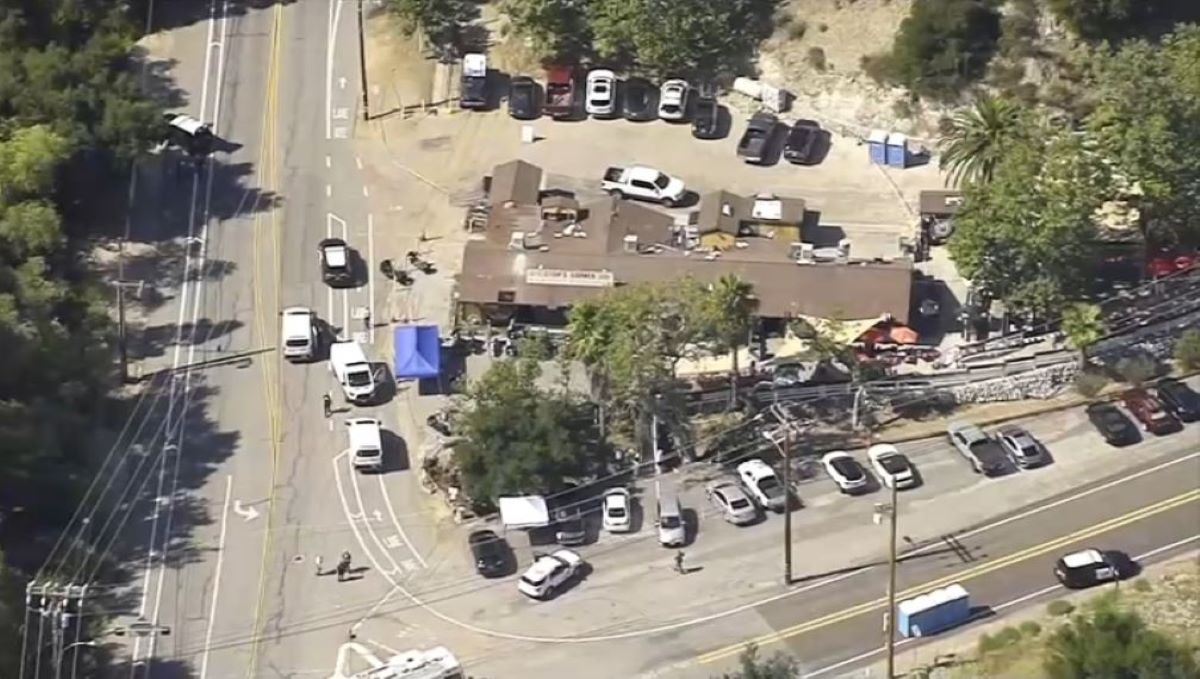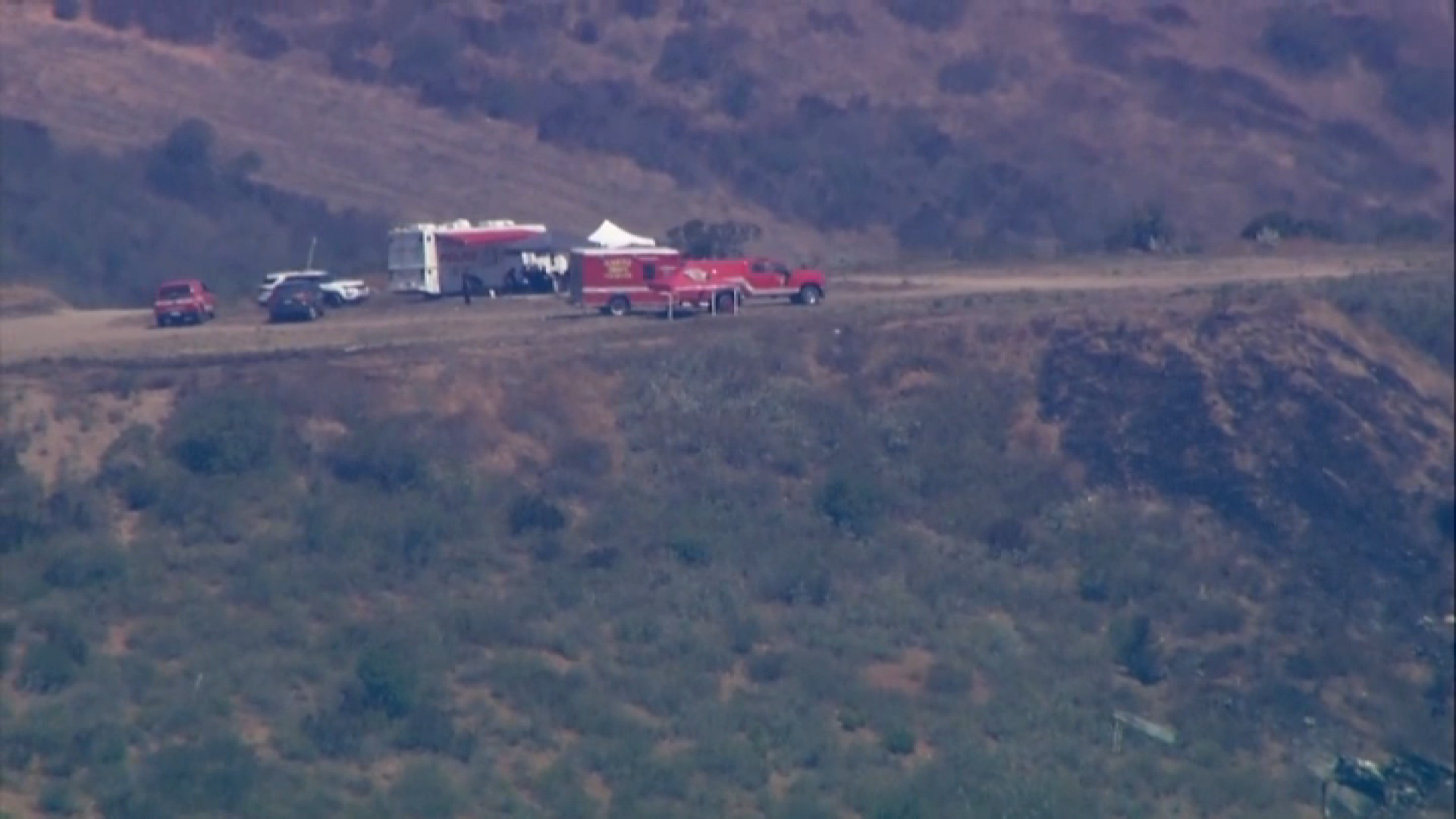What to Know
- The boil water advisory was lifted at 4:36 p.m. Saturday. All affected residents can resume using their water as normal
- On Thursday, E.coli contaminants were found in the drinking water of a South Bay service provider
- Residents impacted by the advisory were able to pick up free water at the location below
The boil water advisory for a large part of San Diego County's southwestern portion was lifted by California American Water at 4:36 p.m. Saturday after extensive testing showed no sign of E.coli contamination, according to the agency.
E.coli contaminants were found in the drinking water system of a South Bay service provider on Thursday, prompting a boil water advisory for a large part of the South Bay, including the Silver Strand, Imperial Beach, parts of San Diego, Chula Vista and San Ysidro.
Get San Diego local news, weather forecasts, sports and lifestyle stories to your inbox. Sign up for NBC San Diego newsletters.
The advisory was issued after a water line on Seacoast Drive in Imperial Beach tested positive for the bacteria, indicating the water could be contaminated with human or animal waste, health officials said. The cause of contamination is still being investigated.
Brian Barreto, External Affairs Manager of Cal-Am explained what led up to the advisory being lifted.
"California American Water working directly with the division of drinking water was required to do additional sampling which we conducted on Thursday and on Friday. The results of those samples came back as negative and once we received two negative results from sampling, we were able to lift the boil water advisory," Barreto said.
Businesses in the area said they are sharing in that relief.
"We are excited – we are here to get people together, have great convos over some beers and tomorrow we are back to full speed ahead. We’ve done all the flushing of water that we can do. We’ve got the kitchen open doing a limited menu tonight and we will be full speed ahead with breakfast and coffee in the morning," said Mike Hess Brewing Shift Manager Matt Van Vorst.
County public health continues to monitor health related issues that may have been caused by drinking unsafe drinking water
After a boil water advisory it is recommended that all people affecteded flush the plumbing in their building or home by running all cold water faucets for at least five minutes each.
Original story
The San Diego County emergency services response team believed more than 106,000 San Diego County residents utilizing about 17,000 water lines were affected by the advisory. Residents were urged to boil their water through the weekend and some schools canceled classes on Friday as a result.
Spokesperson Brian Berretto with Cal American Water Company (CAWC) said the alert, when in effect, had been expanded to the following areas but did not state why or why the added areas weren't initially included in the advisory.
- Coronado south of Fiddler's Cove
- All of Imperial Beach
- Parts West Chula Vista serviced by CAWC
- Parts of West San Ysidro serviced by CAWC
- Parts of the Nestor neighborhood
- Parts of Otay Mesa West neighborhood
- Parts of Southwest Chula Vista
- Parts of the city of San Diego included in the map below
Emergency response, getting water to residents and a timeline of the advisory
The County's Emergency Services Center was activated and a team of local and state emergency managers were coordinating a response that included getting water to residents, San Diego County Supervisor Nora Vargas said in a news conference on Friday.
Vargas said it was not yet clear when the advisory could be lifted. She added that in order for that to happen, California-American Water Company would need to first identify the source of the contamination and conduct two consecutive tests with negative results.
Dr. Eric McDonald, director of the County Health and Human Services Agency, said it is often the case that drinking water contamination occurs following a major storm like last week's Tropical Storm Hilary. That's one reason why public health officials urged San Diego County residents to be prepared with extra drinking water.
Imperial Beach Mayor Paloma Aguirre responded to the contamination happening in her city on Friday.
"I'm interested in finding out what the source was so this doesn't happen again," Mayor Aguirre said.
"All we know is we have a crisis on top of an emergency on top of a crisis. Our water is poisoned — our air is poisoned and now our drinking water is poisoned and that is absolutely unacceptable," Aguirre said.
"Potentially by tomorrow if the sample tests negative again, they will be able to lift the advisory by tomorrow," Aguirre added.
Residents impacted would be able to pick up cases of water at the CAWC's operation center at 1025 Palm Ave., Imperial Beach. Vargas said other water distribution centers would be opened but those locations were not yet set.
Boil water advisory shuts down schools, businesses
Update: No food facility inspection or approval is needed for restaurants to reopen, according to Cal-Am. The County requests that affected businesses complete a voluntary Boil Water Advisory Economic Impact Survey. County officials will use the information to determine if they should attempt to seek state and/or federal assistance. The survey does not guarantee eligibility for assistance and is NOT a substitution for submitting a claim with Cal-Am or your insurance company. The deadline for the survey is Sept. 15.
On top of the thousands of residents impacted, hundreds of businesses would need to shut down operations due to unsafe handling conditions, a spokesperson for the San Diego County Health and Human Services Agency (HHSA) said. It was not safe for businesses to remain in operation if they could not properly wash dishes or hands.
Businesses were urged to call the county at 858-505-6900 for a plan to modify their operations. They should also keep track of any impact the boil water advisory had on typical operations for assistance in the future. A form would be offered at a later date to note their impacts, a spokesperson for the County Office of Emergency Services said.
School districts took proactive measures to either shut down schools entirely on Friday or shut off drinking water to avoid possible contamination.
The city of Chula Vista said an earlier map issued by the CAWC included portions of their city that were not actually impacted by the boil water advisory. The Sweetwater Authority, which serves water to most of Chula Vista, said they were not affected by the notice and reassured customers their water was safe to consume. Anyone who would like to check if they're within the Sweetwater Authority boundary was urged to use this map.
What to do when a boil water advisory is issued, according to the CDC
The Centers for Disease Control and Prevention has some guidance for residents under the advisory.
Some effects of drinking unboiled water can include diarrhea, cramps, nausea, headaches or other symptoms. E. coli may pose a special health risk to infants, young children, some elderly and people with severely compromised immune systems, health officials said.
Residents are encouraged to boil all water for three minutes and let the water cool before they use it and are encouraged to use bottled water for drinking, brushing teeth and food preparation until further notice.
How to boil your water properly under a boil water advisory:
- Use bottled or boiled water for drinking (even if your tap is filtered), and to prepare and cook food.
- If you can't get bottled water, bring your water to a full rolling boil for three minutes. Allow water to cool before use so you don't burn yourself.
- Do NOT use ice or water from a refrigerator
Handwashing
- In many cases, you can use tap water and soap to wash hands during a boil water advisory. Follow the guidance from your local public health officials.
- Be sure to scrub your hands with soap and water for at least 20 seconds. Then, rinse them well under running water.
- If soap and water are not available, use an alcohol-based hand sanitizer that contains at least 60% alcohol.
Bathing and showering
- Be careful not to swallow any water when bathing or showering.
- Use caution when bathing babies and young children. Consider giving them a sponge bath to reduce the chance of them swallowing water.
Brushing teeth
- Brush teeth with boiled or bottled water. Do not use tap water that you have not boiled first.
Washing dishes
- If possible, use disposable plates, cups, and utensils during a boil water advisory.
- Household dishwashers generally are safe to use if:
- The water reaches a final rinse temperature of at least 150 degrees Fahrenheit (66°Celsius), or
- The dishwater has a sanitizing cycle.
- Sanitize all baby bottles.
- To wash dishes by hand:
- Wash and rinse the dishes as you normally would using hot water.
- In a separate basin, add 1 teaspoon of unscented household liquid bleach for each gallon of warm water.
- Soak the rinsed dishes in the water for at least one minute.
- Let the dishes air dry completely before using again.
Laundry
- It is safe to wash clothes as usual.
Cleaning
- Clean washable toys and surfaces with:
- Bottled water,
- Boiled water, or
- Water that has been disinfected with bleach [PDF – 1 page].
Caring for pets
- Pets can get sick from some of the same germs as people or spread germs to people. Give pets bottled water or boiled water that has cooled.
- If bottled water is not available, bring water to a full rolling boil for 1 minute (at elevations above 6,500 feet, boil for 3 minutes). After boiling, allow the water to cool before use.
- Boil tap water even if it is filtered (for example, by a home water filter or a pitcher that filters water).
- Do not use water from any appliance connected to your water line, such as ice and water from a refrigerator.
Caring for your garden and houseplants
- You can use tap water for household plants and gardens.
No other information was available.
Please refresh this page for updates on this story. Details may change as more information becomes available.



